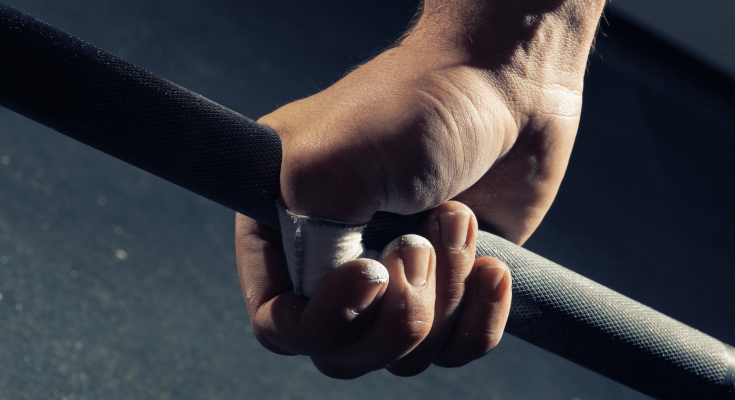Crush grip represents the most fundamental and recognizable form of hand strength – the raw power generated when you squeeze your fingers against your palm. This type of grip strength forms the backbone of countless daily activities, from opening stubborn jars to carrying heavy groceries, and serves as a cornerstone for athletic performance across numerous sports and disciplines.
Understanding and developing your crush grip isn’t just about achieving impressive handshake strength or party tricks. Research consistently demonstrates that crush grip strength correlates strongly with overall health markers, longevity indicators, and functional independence as we age. For athletes, a powerful crush grip often determines performance limits in activities ranging from rock climbing to martial arts.
The Anatomy of Crush Grip Strength
Primary Muscle Groups Involved
Crush grip primarily engages the flexor digitorum profundus and flexor digitorum superficialis – the deep and surface finger flexors respectively. These muscles work in coordination with the flexor pollicis longus (thumb flexor) and various intrinsic hand muscles to generate the squeezing action that defines crush grip strength.
The forearm muscles play a crucial supporting role, with the flexor carpi radialis and flexor carpi ulnaris providing wrist stability during maximum grip efforts. Understanding this muscular coordination helps explain why effective crush grip training requires attention to both finger strength and forearm development.
Biomechanical Factors
The leverage system of your hand significantly impacts crush grip performance. Individuals with longer fingers relative to palm size often have mechanical advantages in certain grip positions, while those with broader palms may excel in different grip configurations. This natural variation explains why standardized grip measurements can vary significantly between individuals of similar overall strength levels.
Progressive Training Methodologies
Foundation Building Phase
Beginning crush grip training requires establishing a solid baseline while avoiding overuse injuries. Start with basic exercises that allow you to control the resistance and duration precisely. Hand grippers, stress balls, and tennis balls provide excellent entry-level training tools that accommodate various strength levels.
Focus on achieving 15-20 repetitions with complete closure during this phase. The goal is building muscular endurance and establishing proper movement patterns rather than maximizing resistance. This foundation phase typically lasts 4-6 weeks for beginners.
Strength Development Phase
Once you’ve established a foundation, progress to heavier resistance levels that challenge you in the 8-12 repetition range. This phase emphasizes building raw crushing power through progressive overload. Gradually increase resistance levels while maintaining proper form and full range of motion.
Heavy-duty grip trainers and adjustable resistance devices become valuable tools during this phase. The key is consistent progression – aim to increase resistance by 5-10% when you can complete your target repetitions with perfect form.
Peak Performance Phase
Advanced practitioners focus on maximum single-repetition efforts and specialized techniques. This phase incorporates isometric holds, negative repetitions, and advanced grip tools designed for serious strength development. Training frequency may decrease to allow for complete recovery between sessions.
Sport-Specific Applications
Rock Climbing and Bouldering
Climbers rely heavily on crush grip for small holds, crimps, and dynamic movements. The ability to generate maximum force through fingertips while maintaining that force under fatigue often determines climbing success. Climbers typically develop exceptional crush grip strength through sport-specific training combined with dedicated grip work.
Martial Arts and Grappling
Brazilian Jiu-Jitsu, judo, and wrestling all require the ability to establish and maintain grips on opponents’ clothing or limbs. Competitors who can maintain crushing grips while fatigued gain significant tactical advantages. The ability to break opponents’ grips while maintaining your own often determines match outcomes.
Strength Sports
Powerlifters and strongman competitors frequently find their deadlift performance limited by grip strength rather than back or leg strength. Developing crushing grip allows these athletes to handle heavier weights without relying on lifting straps, leading to better overall strength development.
Combat and Military Applications
Military personnel and law enforcement officers require functional grip strength for equipment manipulation, climbing, and close-quarters scenarios. The ability to maintain secure grips on weapons, tools, and climbing surfaces under stress can be life-saving in tactical situations.
Advanced Training Techniques
Isometric Protocols
Static holds at various grip positions build the sustained crushing power necessary for many real-world applications. Practice holding maximum grips for 10-30 seconds, focusing on maintaining consistent pressure throughout the hold.
Eccentric Emphasis
Slow, controlled opening phases during grip exercises build strength throughout the full range of motion. Take 3-5 seconds to slowly open your grip after each crushing repetition. This eccentric emphasis builds strength and helps prevent imbalances.
Variable Resistance Training
Using tools with changing resistance throughout the range of motion better mimics real-world grip demands. Some advanced grip trainers provide exponentially increasing resistance, challenging your grip differently than linear resistance tools.
Equipment Selection and Progression
Basic Training Tools
Standard hand grippers remain the most accessible and effective tools for crush grip development. Look for adjustable models that allow progressive overload as your strength increases. Quality construction and comfortable handles enhance training effectiveness and reduce injury risk.
Intermediate Equipment
Thick-handled implements and grip attachments add variety and challenge different aspects of crush grip. Fat gripz, thick bars, and specialized handles force your grip to work harder during standard exercises like pulls and carries.
Advanced Training Systems
Professional-grade grip training equipment offers precise resistance control and advanced features. Modern grip trainers incorporate features like revolving handles, adjustable resistance, and ergonomic designs that maximize training effectiveness. Tools like the country crush grip represent the cutting edge of grip training technology, offering features specifically designed for serious strength development.
Common Training Pitfalls
Overtraining Symptoms
The muscles involved in crush grip can be trained frequently, but they also require adequate recovery for maximum development. Signs of overtraining include persistent soreness, decreased performance, and tingling or numbness in the hands or fingers.
Imbalanced Development
Focusing exclusively on crushing strength while neglecting extension strength can lead to muscular imbalances and potential injury. Include exercises that work the finger and wrist extensors to maintain balanced forearm development.
Inadequate Progression
Using the same resistance level for extended periods leads to training plateaus. Systematically increase resistance, duration, or training frequency to continue making progress. Document your training to ensure consistent progression over time.
Recovery and Maintenance
Active Recovery Techniques
Light stretching, massage, and gentle finger movements promote blood flow and reduce stiffness between training sessions. Focus on the finger flexors, wrist flexors, and forearm muscles that work hardest during crush grip training.
Sleep and Nutrition
Like all strength training, crush grip development requires adequate rest and proper nutrition. Ensure you’re getting sufficient protein for muscle repair and adequate sleep for recovery and adaptation.
Injury Prevention Strategies
Warm up thoroughly before intense grip training, progress gradually in resistance and volume, and listen to your body’s signals. Sharp pain, persistent discomfort, or neurological symptoms warrant immediate attention and potentially medical evaluation.
Frequently Asked Questions
How often should I train my crush grip strength?
Most people can train crush grip 3-4 times per week, allowing at least one day of rest between sessions. Advanced athletes might train daily with varying intensities, while beginners should start with 2-3 sessions per week to allow adequate adaptation time.
What’s considered strong crush grip strength?
Crush grip strength varies significantly by age, gender, and training background. Recreational athletes typically close grippers in the 100-150 pound range, while serious grip athletes may handle 200+ pounds. Focus on personal progression rather than comparing yourself to others.
Can crush grip training help with arthritis or joint pain?
Moderate crush grip training may help maintain joint mobility and muscle strength, potentially reducing arthritis symptoms. However, anyone with existing joint conditions should consult healthcare providers before beginning intensive grip training programs.
How long does it take to see significant improvements?
Most people notice improvements within 2-4 weeks of consistent training. Significant strength gains typically occur over 8-12 weeks, while reaching your genetic potential may take years of dedicated training and proper progression.
Should I train crush grip separately from other exercises?
Both approaches have merit. Training crush grip in isolation allows you to focus specifically on grip development, while incorporating grip challenges into compound exercises builds functional strength. Most people benefit from a combination of both approaches.
Conclusion
Crush grip strength represents far more than just impressive hand strength – it’s a fundamental component of functional fitness that impacts everything from daily activities to athletic performance. The ability to generate and sustain crushing force through your hands opens doors to improved performance across countless activities while serving as a reliable indicator of overall health and vitality.
The journey to developing exceptional crush grip strength requires patience, consistency, and progressive training approaches. Start with appropriate resistance levels, focus on proper form and full range of motion, and gradually increase challenges as your strength improves. Remember that grip strength development is highly individual – what works best for one person may need modification for another.
Whether you’re an athlete seeking competitive advantages, a fitness enthusiast looking to improve functional strength, or someone interested in healthy aging, crush grip training offers remarkable returns on investment. The skills and strength you develop through dedicated grip training will serve you throughout your life, maintaining your independence and capability well into your later years.
Your hands are the primary interface between your body and the world around you. Investing in their strength and capability through focused crush grip training pays dividends that extend far beyond the gym, enhancing your quality of life in countless measurable and immeasurable ways.




